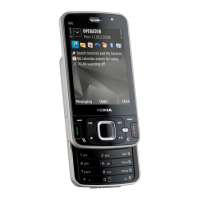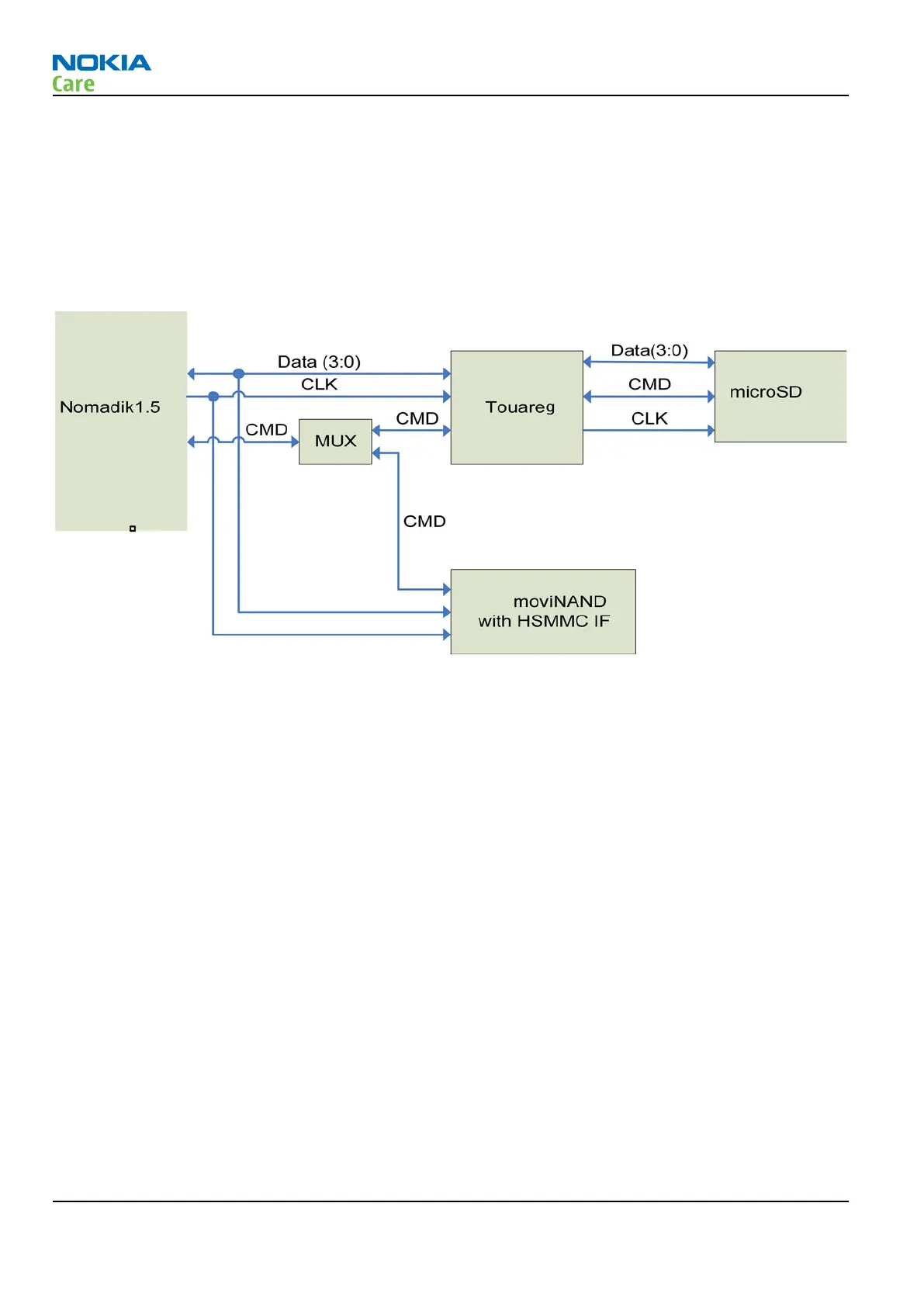Internal mass memory interface
Internal mass memory called eMMC is a BGA-packaged FLASH with HS-MMC interface. The eMMC memory
interface is compliant with the MultiMediaCard Specification version 4.2. The host in the eMMC interface is
application ASIC D4800 (Nomadik1.5). A Dual MMC Architecture Interface has been implemented on Nomadik
1.5, which is includes a microSD card, and an Embedded eMMC.
Both of them are connected to the Nomadik’s SD/MMC/SDIO interface A memory selection has been done
through the Command line multiplexing which is controlled by GPIO23.
Figure 52 eMMC block diagram
SD card interface
Memory card interface is compliant with the MultiMediaCard Specification version 4.x, the SD Memory Card
Specification, Physical Layer Specification version 2.00 and Secure Digital Input/Output Card Specification,
Version 1.20.
A Dual MMC Architecture Interface has been implemented on Nomadik 1.5, which is includes a microSD card,
and an Embedded eMMC. Both of them are connected to the Nomadik’s SD/MMC/SDIO interface A memory
selection has been done through the Command line multiplexing which is controlled by GPIO23.
The host in the SD card interface is application ASIC D4800. SD card transceiver/level shifter is built in Touareq
IC (N4200). There are four data signals, one command signal and a clock output signal going in N4200. For
transceiver control, there are direction signals to each data signals and one also for CMD. A feedback clock is
coming from transceiver to host. Clock frequency used is 12 MHz (TBD later). ESD protection is implemented
with an ESD ASIP, R5200.
Hot-Swap
To enable Hot-Swap of the micro SD card, the device uses an SD card connector with a pre-warning signal.
To enable card removal, the user needs to push SD-card further in to the connector first. This gives so-called
pre-warning signal to the system and ongoing write/read operation can be finished safely before card
isremoved. Note that this is just a backup mechanism and does not cover all the use cases (writing/
readinglarge amount of data): the user should always complete the write operation before starting the card
removal.
RM-247
System Module
Page 7 –18 COMPANY CONFIDENTIAL Issue 1
Copyright © 2008 Nokia. All rights reserved.

